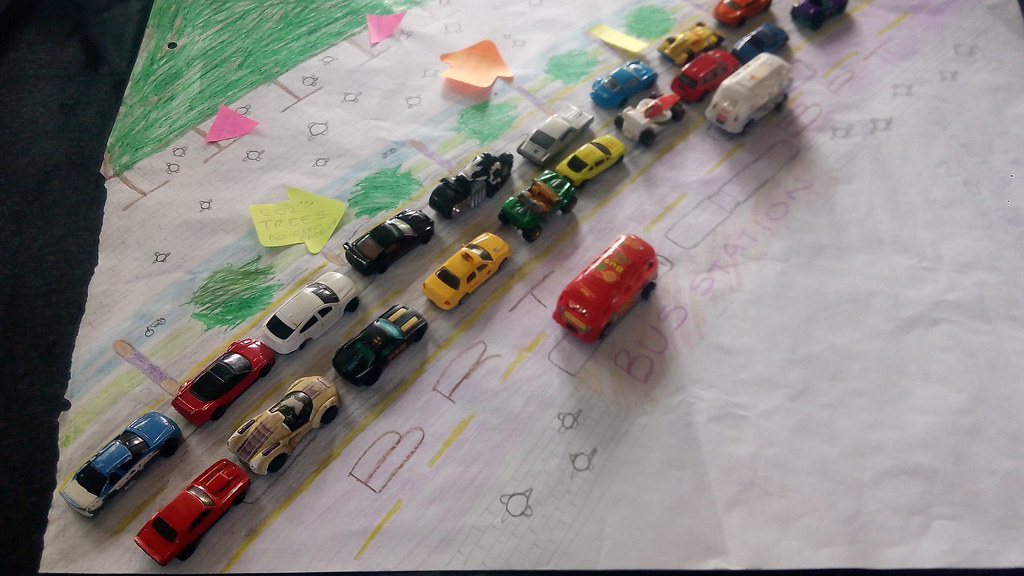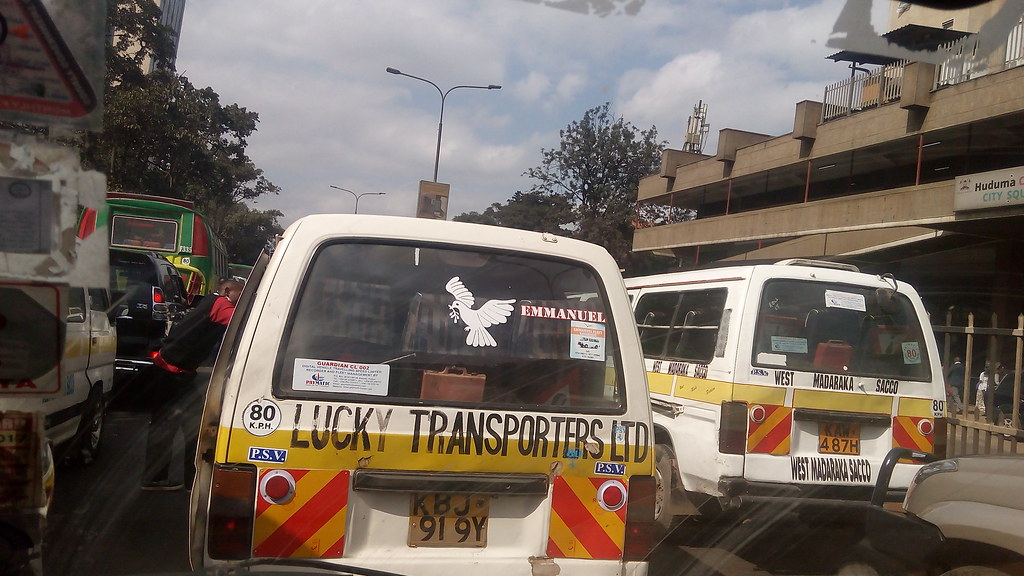A few months ago, a Senior Nairobi County Government official stated that ‘Bus Rapid Transit cannot work because of the current population of the city.’ The statement drew a lot of attention and debate among the urban planning and design community in the city. Coincidentally, it was made around the same time that the Nairobi Metropolitan Transport Authority showcased the map of Nairobi’s proposed BRT to a group of transport and creative experts. As to the questions of who is in charge of transportation in Nairobi and the structure of transportation authorities in the city, those are matters to be covered elsewhere. The more interesting discussion revolves around what the determining factors for mass rapid transit in a city should be.
In a number of forums, representatives of various development partners have given several different responses on the viability of Bus Rapid Transit and other public transport models for the City of Nairobi and its metropolitan area. Some County officials have also been clear that ‘Buses cannot work in Nairobi’. The claims have been made during meetings with private sector, city residents associations, professional bodies and civil society groups. The Transport CS is also on record as having said that ‘BRT is not possible because ‘Nairobi lacks adequate space for a bus rapid transit’. He attributed the problem to poor planning of the city, saying ‘it [did] not have a dedicated lane for buses’.
What is BRT and what are the various ways in which buses have been used to enhance public transit? Developed in the mid 70s, BRT is a system that provides for buses to have their own segregated ways within cities. The segregated ways prevent the buses from being caught in traffic (unlike single user private cars) thereby enabling them to adhere to fixed routes and schedules. The BRT system has brought efficiency and reliability within the public transit systems of many cities. It is sometimes viewed as an alternative version of Light Rail transit where articulated buses are used in place of trains. Where such buses are used for BRT, they are much cheaper to install and they allow for flexibility of routing and timing.
BRT has been successful in many cities. The table below shows the main successful BRTs and the city populations as well as population densities.
| City | Name of BRT System | Population of City | Number of Users (year in brackets) |
| Bogota, (Colombia) | Transmilieno | 8,080,734 | 1,400,000 daily (2009) |
| Yichang, (China) | Yichang BRT | 240,000 daily (2015) | |
| Guangzhou, (China) | GBRT (Zhongshan Avenue) | 14,043,500 | 1,000,000 |
| Curitiba, (Brazil) | Curitiba BRT (Linha Verde) | 1,879,355 | 2,300,000 per day |
| Rio de Janeiro, (Brazil) | BRT (TransCarioca, TransOlimpica) | 6,453,682 | |
| Medellin, (Colombia) | Metroplús | 2,441,123 | |
| Buenos Aires | Nueve de Julio Avenue (widest street in the world) | City: 2.3 million
Metro: 13 million |
1,000,000 |
| Quito | (some parts is 3m wide) | 1,619, 000 | 81,000 |
In the table above, demographically, Nairobi would rank among the bottom. Many cities with much higher urban and metropolitan populations have managed to set up successful BRTs. This indicator shows that total city population cannot be the only determining factor in terms of the viability of a BRT system. One is left to wonder why a county government or a development agency would make a blanket statement against a system using a biased theory. There have to other factors that determine the modal shift of a city.
Understanding transportation systems requires a deeper understanding of city development, urban land use, socio-cultural dynamics, mobility and access. Samuel I Schwartz in his recent book ‘Street Smart, The rise of cities and the fall of cars’ suggests that the one lesson in urban development, especially on transportation, is that ‘change is constant.’ Change arises from land use, population, growth of a city and culture of people, among other factors. The position that an urban characteristic may be deemed to be the ‘ultimate’ or ‘universal’ solution to a city’s problems is therefore a flawed one. Challenges will continue to emerge in different ways. Urban areas continue to change, as they have over the last 2000 years; visits to Rome, Athens, Tunis (Carthage) and Mombasa provide a clear indication of this.
Transportation, mobility and access can be best understood by recognizing the importance of points of origin and destination. Land use, channel characteristics, wayfare/wayleave, population density and links to other areas in a city are factors that all have to be considered at planning and development stages. This therefore has a big implication on the best modes to be adopted in a transport channel. For this reason, it is important for cities to make an ‘alternative analysis’ on each transportation channel which analyzes the variables that would determine the best transportation option suitable for that channel.
Such analyses can also include expected future trends in 20 or even 30 years time, although one must consider that unexpected changes will occur. A good example of the former was the change in London’s population- it peaked at 8.3 million in the mid 30s and then started to decline as industries started setting up in other cities. Another important example is technological change, some illustrations of which include the development of personal cars in the 20th Century, the recent growth of Aerial Cable Transit in Cities and the prediction of self driven vehicles over the next few decades. Political factors, the nature of which are not easily predicted, are also likely to affect future trends.
The Transit Capacity and Quality of Service Manual (TCQSM), a guide generally used in the United States, recommends a minimum ridership of 1,200 passengers per direction at the peak hour (ppdph) as the minimum threshold for an exclusive bus lane. Other planners think that BRT as a technology cannot handle more than thirty-five thousand ppdph. TransBrasil which is scheduled to open by the end of 2018 in Rio de Janeiro is expected to carry up to sixty thousand customers during peak hour. It will make extensive use of express services, two lanes per direction, and larger buses, such as articulated and bi-articulated buses.
Another unique feature of BRT has to do with system design. For example, if the system is designed with more capacity than it requires, it will be needlessly expensive and consume too much right-of-way that might otherwise be used for footpaths, cycle ways, public space, parking, or private vehicles. Alternatively, if capacity is too low, BRT stations will be overcrowded, and vehicle speeds might even be slower than current speeds, thus alienating customers.
New York is well known for its highways and subways. Robert A. Caros’ book ‘The Power Broker’ explains how Robert Moses avoided inclusion of public transport in his transportation plans in spite of suggestions by planners. Jeanette Sadik Khan, in her text ‘Street Fight’ explains how the New York ‘Select Bus Service’ was established. She clarifies how ‘each city can take advantage of the fact that buses only require roads and avoid the construction costs and land use issues that come with rail.’ Select Bus Service was developed to assist neighbourhoods underserved by public transit. New York did not have wide lanes for buses (contrary to what the Kenyan CS suggested). They started by experimenting along Fordham Road making use of paint to mark out the bus lanes and educating people as a result of which ridership increased by 10% and travel time improved by 20%. Following soon after were 1st and 2nd Avenues, then M15, then 34th (that has 300,000 people working within a quarter mile and 900,000 riders) and is linked to railroads, 6 subway lines and train services. The eventual combined cost of all the lines implemented over the 5 years was 85m USD – equivalent to the cost of five and a half subway trains, not to mention the extended influence on pedestrianization, wider impact on bike lanes and redesigning of streets (to put cars in their place). As of 2015, the New York Metropolitan Transport Authority carried 2.5 million passengers by bus on an average weekday. 5 years into operation and development, it had saved 60 million annual bus passengers more than 550 cumulative years of travel time.
Bogota’s Transmilieno, which is a citywide network, cost five percent of a metro system. It has quick boarding due to station and bus design and carries 2.2 million passengers daily (city of 8 million people).
Closer home, Dar es Salaam was awarded the ‘2018 Sustainable Transport Award’ after its implementation of DART (Dar es Salaam Rapid Transport Agency) that runs their new BRT system. This is the first BRT system in East Africa and Kenyan visitors have already started requesting for one in their cities.
Many cities such as Medellin, Singapore and Algiers have created multi modal systems over time and have linked them to their land use systems. These involve cable cars, metro rail, light rail as well as integrating non motorized systems.
The concept of coming up with an ‘ultimate solution’ ought to be put aside. Instead, continual research and analysis is required as the city evolves. Cities are better served by developing modes that suit routes and land use and getting rid of the idea of a ‘master plan’ that will attempt to solve all its problems (which tend anyway to remain on paper). Besides, often times these proposals are presented by development partners who are more interested in reaping financial benefits from the projects than helping cities themselves.
African Cities will require to examine key aspects such as infrastructural input as well as cost implications (short and long run). Fears of current cartels that run paratransit systems remain a big concern but integration is a key aspect of modern urban development.
Innovative systems that have operations that attract to customers- safety, speed wise, boarding and alighting (low floors, easy bus stops), priority over signals and at junctions, off board payment among others.
What are the high ranking transport corridors where a BRT can easily be installed? Which areas can BRT not work at all due to current growth and development trends (projected increased demand and poor land use)?



Those opposed to BRT may be protecting their own interests. There are many people in Kenya who benefit from the utter chaos of our transport system. BRT is far more affordable for Kenya than light rail. Tanzanians have already embraced BRT and are reaping the rewards in terms of cheaper transport costs and time saved.
You are right. There is also a big problem in the way they go about projects eg. they have gone into transport projects as if there is nobody already working or making use of the existing structures in the system.